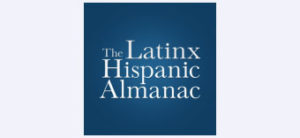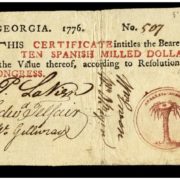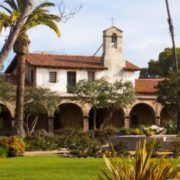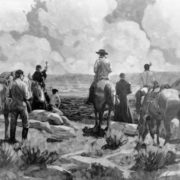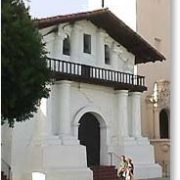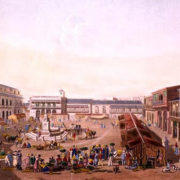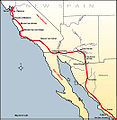The Dollar / Spanish Peso 1776
The Spanish empire and its economy dominated the Americas in the late 18th century, and the Spanish peso was the premier currency in the rebellious North American colonies. The Spanish peso was so widely used that even the British paid their soldiers in the colonies in silver pesos. The majority of the silver for the pesos was mined in Mexico during the late 18th century, and the coins were also called “Mexicans”. The US Congress instituted the Continental dollar in May of the previous year (1775), and provided that the notes would be payable in “Spanish Miller Dollars or the value thereof in gold and silver.” As the American Revolutionary War progressed, the Continental dollar hyper-inflated and rapidly lost value. In November of 1776, Congress adopted the Spanish peso as their unit of currency. (Please visit www.OurAmericanHistory.com for more information on the contribution of the Spanish and Latinx to the American Revolutionary War.)
El imperio español y su economía dominaron América a finales del siglo XVIII th , y el peso español fue la moneda principal en las rebeldes colonias norteamericanas. El peso español se usó tan ampliamente que incluso los británicos pagaron a sus soldados en las colonias en pesos de plata. La mayor parte de la plata de los pesos se extrajo en México a fines del siglo 18, y las monedas también se llamaban “mexicanas”. El Congreso de los Estados Unidos instituyó el dólar continental en mayo del año anterior (1775), y dispuso que los pagarés serían pagaderos en “Dólares Miller españoles o su valor en oro y plata”. A medida que avanzaba la Guerra Revolucionaria Estadounidense, el dólar continental se hiperinfló y perdió rápidamente valor. En noviembre de 1776, el Congreso adoptó el peso español como su unidad monetaria. (Visite www.OurAmericanHistory.com para obtener más información sobre la contribución de los españoles y latinos a la Guerra de Independencia de los Estados Unidos).
